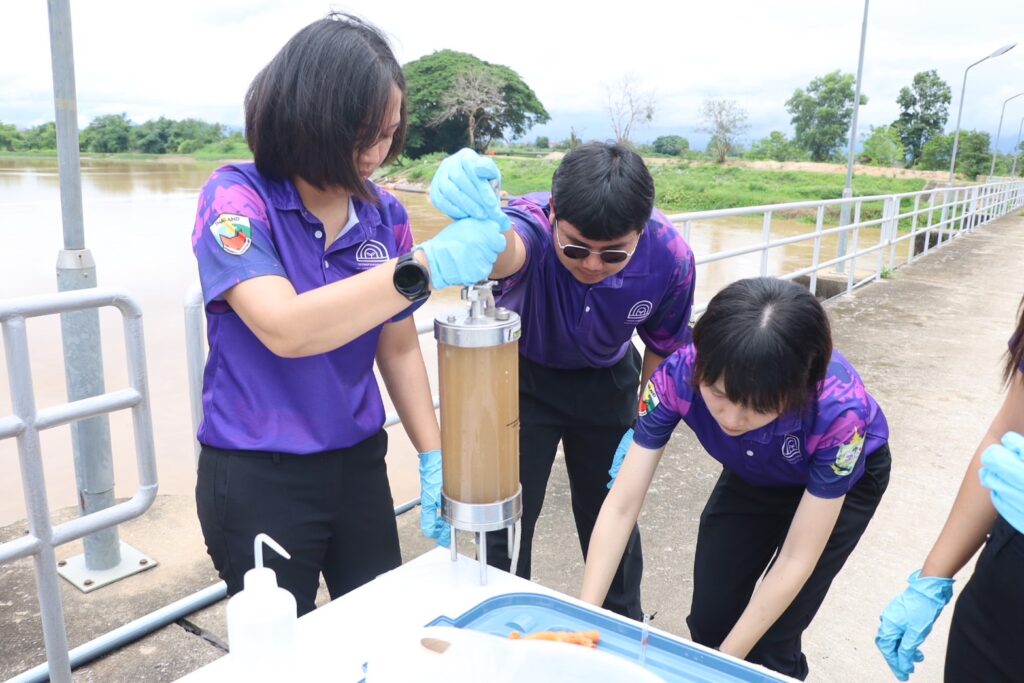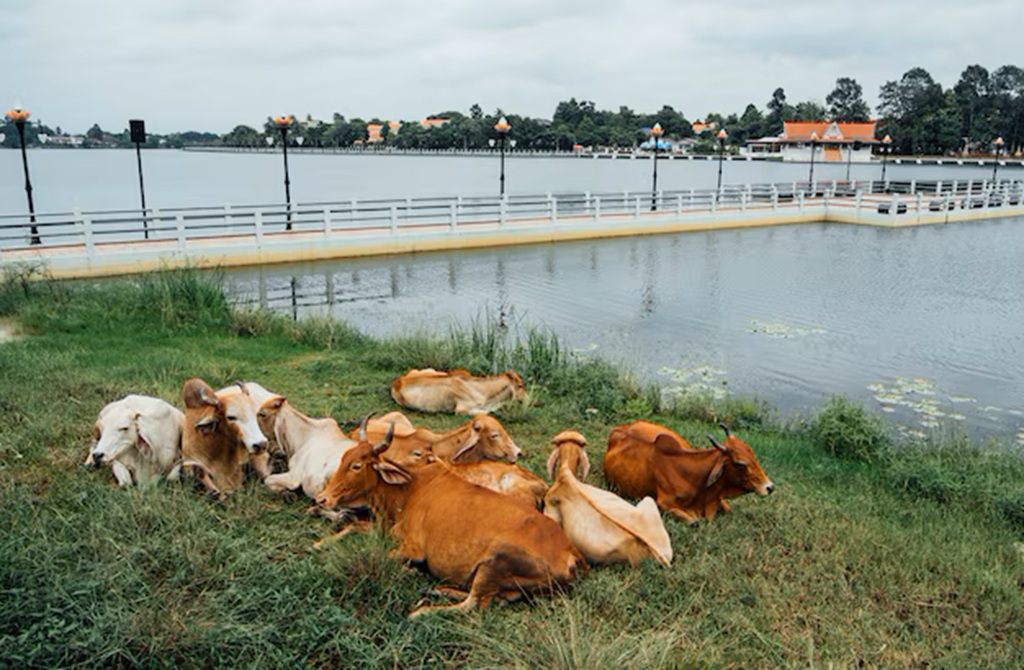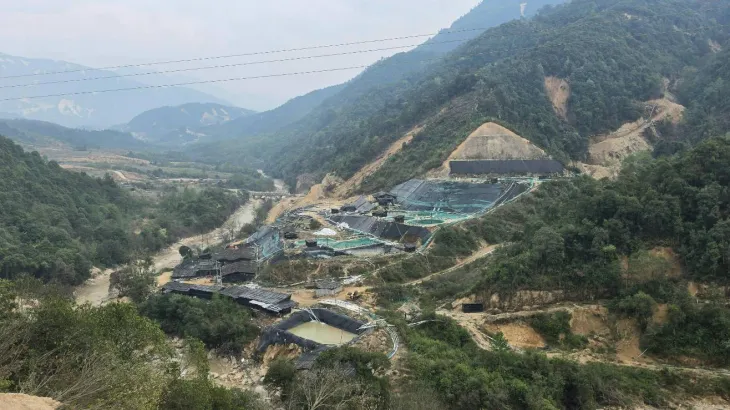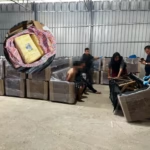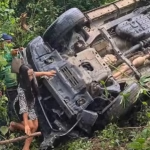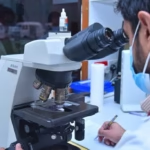CHIANG RAI – The Department of Water Resources held a public forum to hear local views and review support measures for communities along the Kok River in Mae Ai district, Chiang Mai. Before the discussion began, relevant agencies presented updates on chemical contamination in the Kok and related rivers and their effects on health and agriculture.
Duangsamorn Prueththikun, Director of the Plant Protection and Soil and Fertiliser Management Promotion Division, Department of Agricultural Extension, said poor water quality in the Kok, Sai, Ruak, and Mekong rivers affects both public health and farm production.
The Department has set up a disaster situation centre and assigned a Northern hub, the Plant Promotion and Development Office 5 in Chiang Mai, to run a Risk Analysis Centre for Plant Disasters.
Using geographic information, officials mapped areas and the number of affected farmers. According to the Office of Environment and Pollution Control Region 1, Chiang Rai has impacts in seven districts, while Chiang Mai has one affected district, Mae Ai.
Estimated agricultural area affected: Chiang Rai, 130,000 rai; Chiang Mai, 483 rai.
Produce Heavy Metals Sampling and Testing Program
Under the committee on Kok River water quality, officers collected produce samples with the Chiang Mai Provincial Agriculture Office and subdistrict health promoting hospitals, and sent them to the Department of Medical Sciences for analysis.
Total samples: 119
-
- Chiang Rai: 77 samples
- Chiang Mai: 42 samples
Chiang Rai Produce Results
Sampling covered seven districts, namely Mueang Chiang Rai, Wiang Chai, Wiang Chiang Rung, Mae Chan, Doi Luang, Chiang Saen, and Mae Sai. Tested crops included pumpkin shoots, water spinach, tomatoes, chillies, cucumbers, Chinese cabbage, feed maize, bamboo shoots, limes, yardlong beans, aubergines, rice, purple aubergines, rambutans, and Houttuynia cordata.
Findings in Chiang Rai:
- Arsenic was detected in 21 samples, within standards. Examples include water spinach, tomatoes, cucumbers, chillies, rice, Chinese cabbage, and Houttuynia cordata. The standard for arsenic is not more than 2 milligrams per kilogram.
- Cadmium was detected in 33 samples, within standards.
- Lead detected in 25 samples, within standards.
Chiang Mai Produce Results
In Mae Ai district, 42 samples were collected. Crops included tangerines, green chilli, cabbage, mango, fresh chilli, garlic, super hot chilli, sweetcorn, feed maize, passion fruit, sweet potato, turmeric, Spondias, ridged gourd, bamboo shoots, papaya, pisang awak bananas, Chao Phraya aubergine, yardlong beans, cucumber, okra, and galangal.
Findings in Chiang Mai:
- Arsenic was detected in 8 samples, within the Ministry of Public Health limits.
- Cadmium was detected in 11 samples, below the standard.
- Lead detected in 3 samples, below the standard.
- Mercury was detected in 7 samples, below the standard.
Standards Used for Food Contaminants
Officials used Ministry of Public Health notifications to interpret results.
- Notification No. 141, B.E. 2553, on food contaminant standards.
- Notification No. 414, B.E. 2553, on food contaminant standards.
Key limits referenced:
- Arsenic: not more than 2 micrograms per kilogram.
- Lead: fruiting vegetables not more than 0.05 micrograms per kilogram, leafy vegetables not more than 0.3 micrograms per kilogram.
- Cadmium: fruiting vegetables not more than 0.05 micrograms per kilogram, leafy vegetables not more than 0.2 micrograms per kilogram.
- Mercury: not more than 0.02 micrograms per kilogram.
Water Quality Criteria for Agriculture
The subcommittee on surface water quality improvement met for the second time and endorsed criteria for using river water during contamination events in the Kok River and Sai River. For agriculture:
- Arsenic concentration for rice cultivation must not exceed 0.05 micrograms per litre.
- Arsenic concentration for other crops must not exceed 0.01 micrograms per litre.
Officials stressed that heavy metals are present in both crops and irrigation water, but current levels meet the set standards. Ongoing monitoring is needed to prevent the build-up over time. People should stay informed and avoid panic.
Fish and Aquatic Life Monitoring
Amphon Sakses, Chiang Mai Provincial Fisheries Officer, representing the Department of Fisheries, reported continuous surveillance of contaminants in the Kok and Sai rivers. The programme checks contaminant levels in fish tissue, surveys fish species and prevalence, and screens for fish diseases.
- From April to September 2025, sampling was conducted twice a month.
- Six survey points on the Kok River recorded 12 species and 49 specimens. Two pla khae (a native catfish) showed abnormal nodules. Follow-up sampling at 22 sites on the Kok, Sai, and Mekong rivers found no further abnormalities.
Heavy metal testing of more than 400 fish samples, both carnivorous and herbivorous species, included arsenic, lead, mercury, and cadmium.
- In the Kok River in Chiang Mai and Chiang Rai, mercury and arsenic were detected on some occasions, but not every time. Detected levels were low and within Ministry of Public Health standards for consumption.
Fish disease checks, both external and internal, mainly found liver flukes, clear leeches, and bacteria.
Drinking and Domestic Heavy Metals Water Checks
Nonthaphat Theerawatthanasiri, Senior Public Health Technical Officer at Health Centre 1, Chiang Mai, said the team sampled water across Health Region 1 in Chiang Mai and Chiang Rai and applied environmental health measures for drinking water and piped supplies. Six rounds of testing were carried out.
- 10 Apr 2025: nine village tap water samples, no arsenic or lead above standards.
- 20 Apr 2025: nine drinking and domestic water samples, no arsenic or lead above standards.
- 28 May 2025: seven drinking and domestic water samples, no arsenic above standards.
- 19 Jun 2025: seven drinking and domestic water samples, no arsenic above standards.
- 19 Jun 2025: twelve drinking and domestic water samples, no arsenic above standards.
- 12 Sep 2025: seven drinking and domestic water samples, no arsenic above standards.
Across 51 samples, no parameters exceeded the standards.
Hotspots tended to be near the Kok River or close to agricultural areas, but recorded values remained within limits.
Public Health Surveillance
Urine samples were collected from at-risk residents in Chiang Mai and Chiang Rai over five rounds. Arsenic in urine did not exceed the reference standard. Ongoing health surveillance has not found any cases of illness from accumulated arsenic or lead exposure.
Bottom Line
- Heavy metals have been detected in farm produce, fish, and irrigation sources, mostly at low levels.
- All findings reported are within national standards.
- Drinking and household water supplies tested did not exceed limits.
- Agencies continue to closely monitor water quality, food safety, and community health.
Chinese Mining in Myanmar
The Kok and Sai rivers rise in Myanmar’s Shan State, then cross into northern Thailand through Chiang Rai and Chiang Mai. Since early 2023, both rivers have seen serious heavy metals contamination, with sharp spikes from March 2025. The main source is unregulated mining in upstream zones run by the United Wa State Army (UWSA), an armed group with strong links to China.
Chinese companies run much of the mining for gold, manganese, and rare earth elements (REEs). Minerals are shipped to China for processing, while toxic runoff moves downstream. Water, riverbed sediments, soils, and farm produce have all been affected, and the pollution has reached the Mekong River.
More than 1.2 million people in Thailand depend on these rivers for drinking water, irrigation, fishing, and tourism. Since 2025, many have seen clear warning signs, such as murky orange-yellow water, fish deaths, and skin rashes in people and animals. These impacts threaten local health, incomes, and food safety, and they add pressure to Southeast Asia’s most important waterway, the Mekong.
Thailand’s Pollution Control Department (PCD) confirmed the Heavy Metals contamination through routine testing. This triggered protests, diplomatic engagement, and public demands to close the offending mines. By November 2025, readings had fallen slightly, helped by temporary shutdowns during storms. Experts caution that long-term risks remain high, especially in the rainy season when floods can move trapped toxins back into circulation.
| Pollutant | Safe Limit (WHO/Thailand Standards, mg/L) | Peak Levels Detected (2025) | Health/Environmental Impacts |
|---|---|---|---|
| Arsenic | 0.01 | 0.034 (Kok River, Thai-Myanmar border); up to 0.026 in Sai River | Cancer, skin lesions, neurological damage; kills fish and aquatic life; bioaccumulates in crops and the food chain. |
| Mercury | 0.006 (WHO) / 0.05 (Thailand) | 0.076 (Kok River) | Kidney/liver damage, developmental issues in children; disrupts ecosystems, leading to fish deformities. |
| Lead | 0.01 | 0.074 (near border) | Cognitive impairment, hypertension; toxic to plants, reducing crop yields. |
| Manganese | 0.4 | 1.10 (Kok River) | Neurological effects: causes sediment buildup, altering river flow. |
| Zinc | 3.0 | Up to 18x limit in Sai River | Respiratory issues harm algae and invertebrates, collapsing food webs. |
| Cyanide | Not specified (highly toxic) | Detected in mine runoff | Acute poisoning; rapid fish kills; persists in low-oxygen waters. |
Sediment samples near the border show arsenic at 33 mg/kg, far exceeding safe thresholds for soil (20 mg/kg). Contaminated floodplains from Heavy Metals have led to toxin buildup in rice, garlic, and eggplant, with estimated economic losses of $40 million USD in 2025 from farming, fishing, and tourism declines.
The Mekong River Commission (MRC) reported elevated arsenic at two Mekong sampling points in July 2025, indicating downstream spread to Laos, Cambodia, and Vietnam.
Permanent mine closures in Shan State are essential, per academics like Asst. Prof. Suebsakul Kitnugul, as barriers like dams can’t address the root causes. Thailand should escalate diplomacy with China (as REE buyer) and recognize ethnic groups’ roles in governance. Communities need expanded testing, alternative water sources, and compensation.





